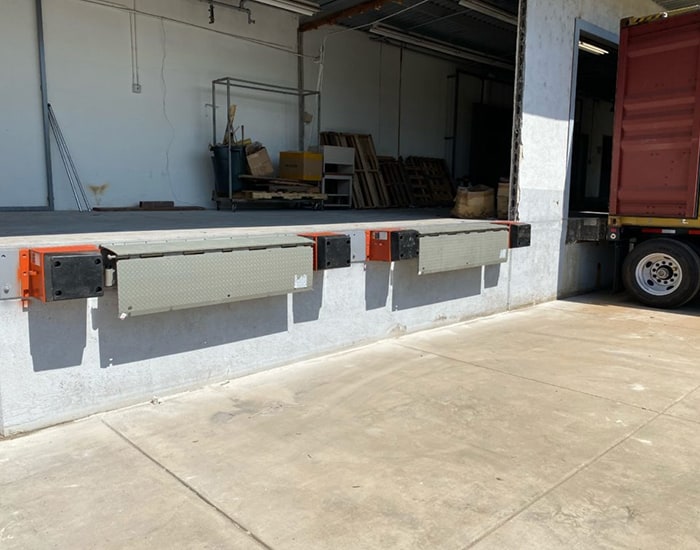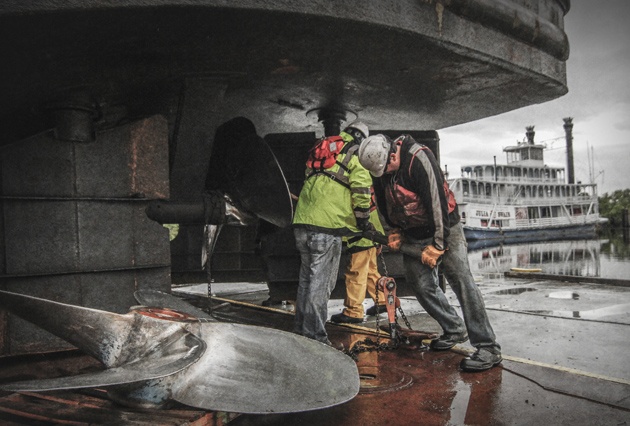Reliable Dock Repair Service Techniques: Making Sure Structural Stability
Making certain the architectural honesty of docks through reliable fixing methods is critical for the long life and safety and security of marine facilities. Ultimately, choosing the appropriate fixing products, such as composite products and corrosion-resistant alloys, is critical for toughness.
Analyzing Dock Damages
Evaluating dock damage is an essential initial step in making sure the architectural honesty and safety and security of any kind of docking facility. This preliminary assessment involves a thorough examination to identify both concealed and visible problems. Key elements to analyze consist of the dock's structure, pilings, decking, and hardware. Each part must be inspected for indications of wear, rot, rust, or various other types of degradation that can jeopardize the structural integrity.
Structural designers or certified inspectors generally perform these evaluations utilizing specialized techniques and devices. Underwater evaluations may utilize sonar tools or remotely ran lorries (ROVs) to discover immersed damages. Above water, aesthetic assessments are matched by utilizing moisture meters and various other diagnostic tools to reveal underlying issues not instantly visible to the nude eye.

Deciding On Repair Work Products
Picking the suitable fixing products is a critical action in the dock repair procedure, one that directly affects the durability and performance of the fixed structure. Product choice have to be driven by aspects such as environmental problems, load-bearing needs, and compatibility with existing dock parts. As an example, timber is a typical option for docks as a result of its all-natural resilience and aesthetic appeal. Picking the best type of wood, such as pressure-treated lumber or naturally rot-resistant species like cedar or teak, is essential to stand up to water environments.
In enhancement to wood, composite products are significantly prominent because of their durability and low maintenance needs. Composites, normally made from a mix of plastic and timber fibers, offer superb resistance to rot, pests, and UV damage. For metal docks, selecting corrosion-resistant alloys such as galvanized steel or marine-grade aluminum is necessary to stop corrosion and guarantee structural honesty in saline water conditions.
Epoxy materials and marine-grade sealers are vital for repairing fractures and securing joints, giving a waterproof barrier and improving the dock's general toughness. By carefully selecting high-grade materials, dock fixings can attain lasting outcomes, consequently safeguarding versus future destruction and guaranteeing secure, dependable use.
Structural Support Strategies
Efficient structural reinforcement methods are essential in guaranteeing the stability and longevity of dock repair services. One fundamental approach involves the usage of steel or composite support bars (rebar) within concrete frameworks. Rebar provides extra tensile stamina, stopping fractures and dispersing tons a lot more evenly. This approach is especially reliable for anchors subjected to hefty lots or severe environmental conditions.
One more essential technique is the application of fiber-reinforced polymers (FRP) These products offer high strength-to-weight ratios and outstanding resistance to rust, making them optimal for reinforcing concrete or wooden docks. FRP can be used in sheets or strips and bonded with epoxy resins to enhance structural stability.
Supporting and securing systems likewise play an essential role in architectural support. Cross-bracing, utilizing steel or wood beams, can combat side pressures, minimizing persuading and activity. Securing systems, such as helical piers or driven piles, give a stable structure by moving loads to much deeper, a lot more secure soil layers.
Lastly, the combination of load-distribution plates can assist disperse weight much more uniformly across the dock's surface, reducing localized anxiety factors. These strategies collectively make sure that anchors continue to be robust and safe, capable of withstanding the roughness of their functional atmosphere.
Advanced Repair Approaches

An additional sophisticated strategy entails underwater welding, which enables for repair services to be carried out Full Article without the requirement to dewater the area. This approach is particularly advantageous for dealing with structural concerns in immersed dock parts, guaranteeing marginal interruption to procedures. Enhanced welding techniques, paired with robot systems, provide precision and integrity, thereby extending the life-span of the dock.
Furthermore, cathodic defense systems are applied to stop corrosion in metal dock structures. By making use of sacrificial anodes or amazed present systems, these strategies efficiently minimize the electrochemical processes that bring about product damage.
Lastly, progressed monitoring modern technologies, such as structural health surveillance (SHM) systems, give real-time data on the problem of dock structures. These systems make it possible for proactive upkeep and timely interventions, ultimately making sure the lasting architectural stability of the dock.
Maintenance and Prevention
Maintenance and prevention are essential concepts that underpin the long life and safety of dock frameworks. Routine assessments are vital, enabling very early detection of damage, potential weaknesses, and ecological influences. A proactive strategy, entailing regular look for corrosion, rot, and structural changes, reduces expensive repair work and lengthens the dock's functional life.
Safety nets ought to include using protective layers to metal elements to guard versus rust and making use of cured timber to withstand decay. Furthermore, making sure correct water drainage and air flow can avoid water build-up, which is an usual cause of structural destruction. Incorporating high quality materials and adhering to maker guidelines during building and construction and repair service stages also play critical duties in improving resilience.

Educating personnel in dock upkeep finest practices guarantees regular application of safety nets. Leveraging technological developments, such as drones for assessments and sensing units for real-time monitoring, can additionally enhance maintenance efforts. By focusing on upkeep and avoidance, dock proprietors can make certain architectural honesty, functional safety and security, and cost-efficient administration over the dock's life expectancy.
Final Thought
In conclusion, preserving the structural stability of aquatic facilities requires comprehensive dock repair service strategies. Advanced fixing strategies, coupled with normal maintenance methods, ensure the dock stays functional and safe under varied ecological conditions.
Guaranteeing the structural stability of docks via reliable repair work strategies is critical click here to find out more for the durability and safety of marine facilities.Selecting the appropriate repair work materials is an essential step in the dock remediation procedure, one that directly influences the durability and efficiency of the repaired structure.Effective structural support strategies are vital in making sure the security and long life of dock repairs. Dock Repairs By focusing on upkeep and avoidance, dock proprietors can guarantee architectural honesty, functional safety and security, and cost-efficient administration over the dock's life expectancy.
In conclusion, preserving the structural stability of marine facilities demands comprehensive dock repair methods.
Comments on “Why Routine Maintenance Can Decrease Future Dock Repairs”